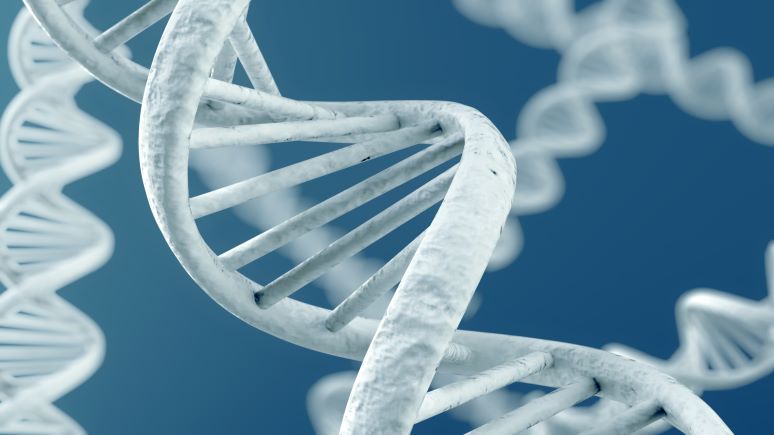Researches revealed that small labeled peptides enter the cytoplasm, nucleus, and nucleolus of the HeLa cells (a type of immortal cell used for scientific studies). It is known that a eukaryotic cell’s nucleus has a system of holes called nucleopores. These pores consist of protein complexes called nucleoporins, and their inner diameter is about 50 nm. As a result, molecules weighing up to 3.5 kDa can come through these openings and get into the nucleus. Consequently, small peptides can cross cytoplasmic and nuclear membranes and possibly interact with DNA.
Based on the data obtained by physical methods and molecular modeling, signal peptides can bind to DNA, destabilizing its secondary structure. More studies and analysis proved that peptide-DNA binding partially destructs hydrogen bonds that keep nucleotides of two strands of the double helix together. What’s more, local separation of the DNA chains called melting is also present.
Experiments established that melting of free synthetic DNA occurs at a temperature of 156.2°F (69.5°C). However, in the DNA-peptide system, this process took place at a temperature of 82.4°F (28°C). These results suggest that there is a thermodynamically easier way to separate DNA strands using the temperature, which corresponds to the temperature range of biochemical processes in most living organisms. In addition, it demonstrates that melting of the DNA strands at physiological temperature is not a denaturation. Instead, it is an initiation of the process of protein synthesis.
Obtained information provided the basis for a model of peptide-DNA interactions in the case of Khavinson peptides. In addition, these results allow the creation of a stable peptide-DNA complex.
The experiment revealed that small peptides might be able to control gene expression by interacting with DNA molecules. Furthermore, it was shown that these peptides activate heterochromatin in cell nuclei in older people. It, in turn, contributes to the ‘release’ of genes previously inactivated due to the aging-related chromatin condensation.
Tightly condensed heterochromatic chromosome regions are genetically inactive and replicate more slowly. On the other hand, the decondensed chromosome regions are actively functioning. Regulatory peptides increase nucleolar concentrations of decondensed chromatin. As a result, more genes become available for expression, and the production of proteins increases. Data obtained in this experiment concludes that chromatin condensation is a reversible process with significant biological consequences.
Regulation of gene expression by Khavinson peptides
Some studies showed that the administration of specific peptides to transgenic mice suppressed the expression of the gene involved in breast cancer by 2 to 3.6 times compared to the control group. Due to this suppression, tumor diameter reduced significantly.
Khavinson peptides are also beneficial for gene expression because of their effect on human cell telomeres. The last are sections of DNA found on the ends of chromosomes and responsible for chromosome stability. For example, some studies showed that the addition of one of the Khavinson peptides to the human lung fibroblast culture medium stimulates enzyme gene expression and promotes the lengthening of telomeres by 2.4 times.
Activation of gene expression is accompanied by an increase in cellular divisions (by 42.5%), which is evidence of overcoming Hayflick’s limit. It states that a normal human cell can replicate and divide only forty to sixty times. After that, it cannot divide anymore and will die by apoptosis (programmed cell death). The fact of overcoming this limit entirely correlates with the earlier stated maximum increase in life expectancy of animals (43,3%) after peptide administration.
DNA-microarray technology was used to study the effect some of the Khavincon peptides have on the expression of 15,247 genes in the heart and brains of mice. Obtained data demonstrated that each peptide regulates a specific gene group. The result of this experiment supports the theory that peptides play a role in the regulation of gene activity. It was also shown that one of the short Khavinson peptides had an immunomodulating activity, regulating gene expression of signaling molecules in blood lymphocytes.
In human pancreatic cell cultures, one of the Khavinson tetrapeptides results in increased expression of seven genes that are important for maintaining the functional activity of pancreatic endocrine cells. However, it also decreases the expression of two such genes.
In addition, studies revealed that one of the Khavinson tripeptides modulates the expression of various genes in the model of induced gastric ulcers in rats. This peptide decreases the synthesis of mRNA genes that encode cellular metabolism proteins involved in cellular defense against reactive oxygen species, inflammatory responses, and lipid metabolism.
Accordingly, DNA-peptide interactions may have played an important role in the origin of life and its evolution by controlling cell function through epigenetic regulation.
You can learn more about the different types of peptides and their functions by Click Here.














Leave a Reply
You must be logged in to post a comment.